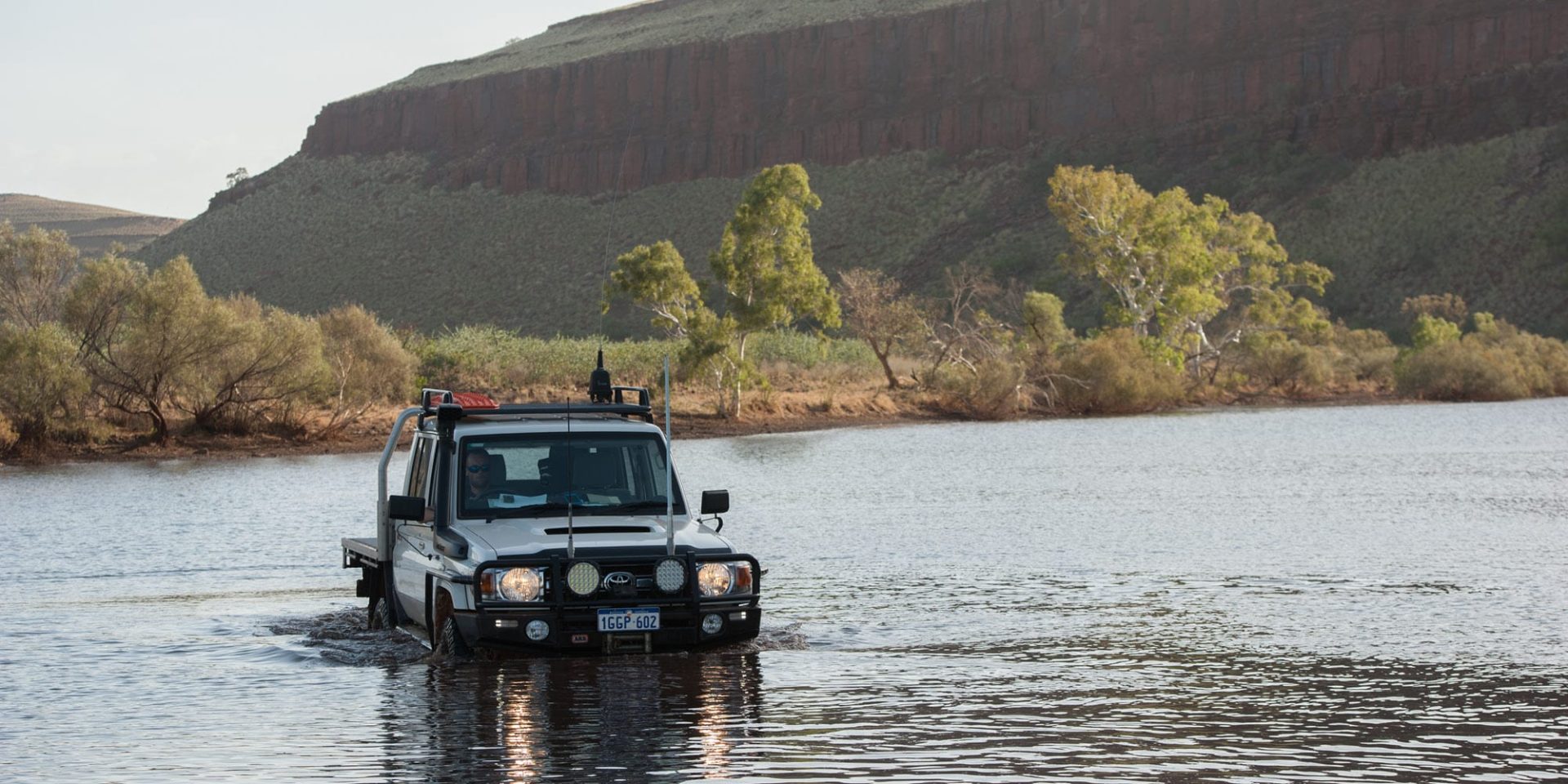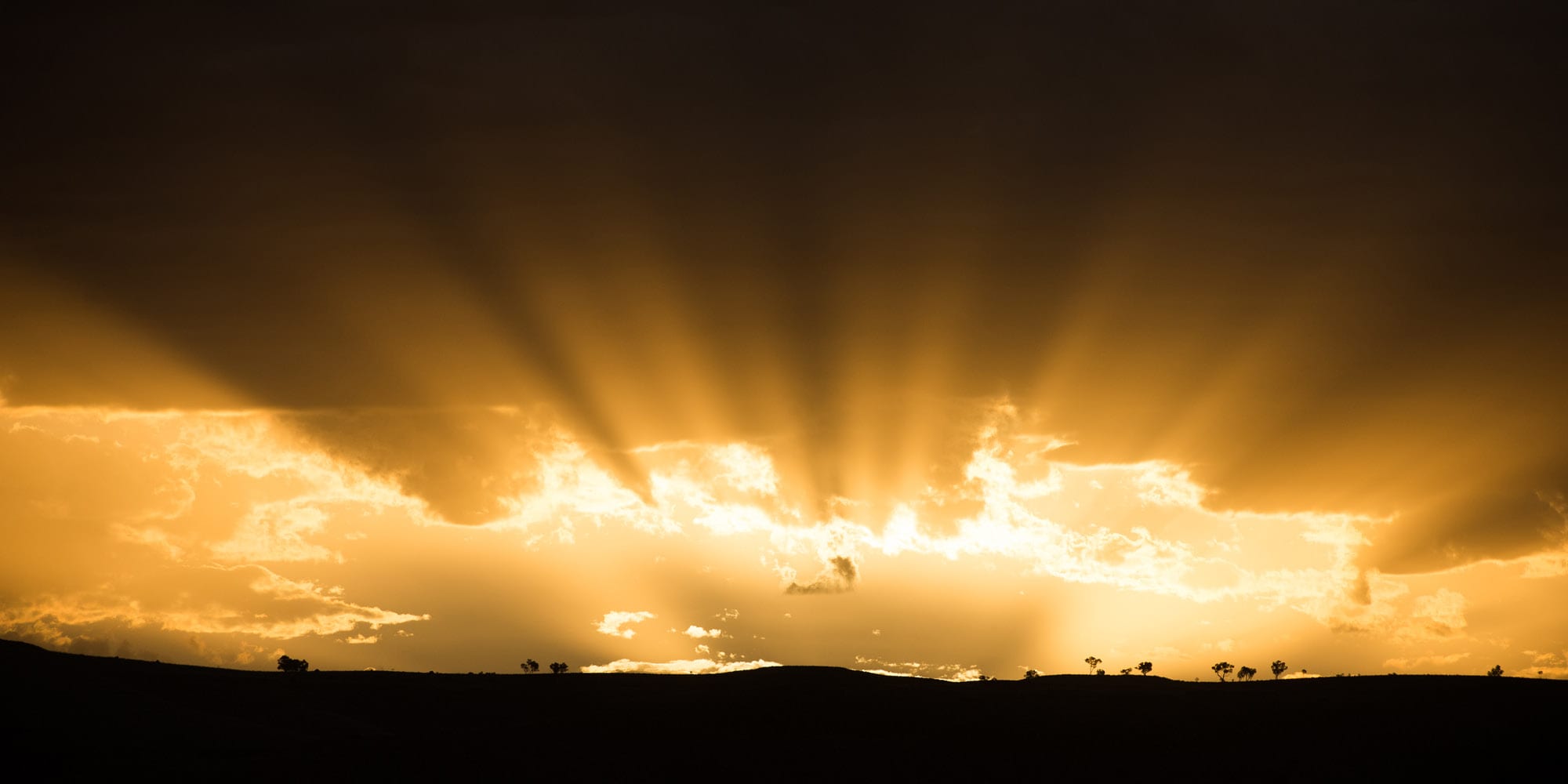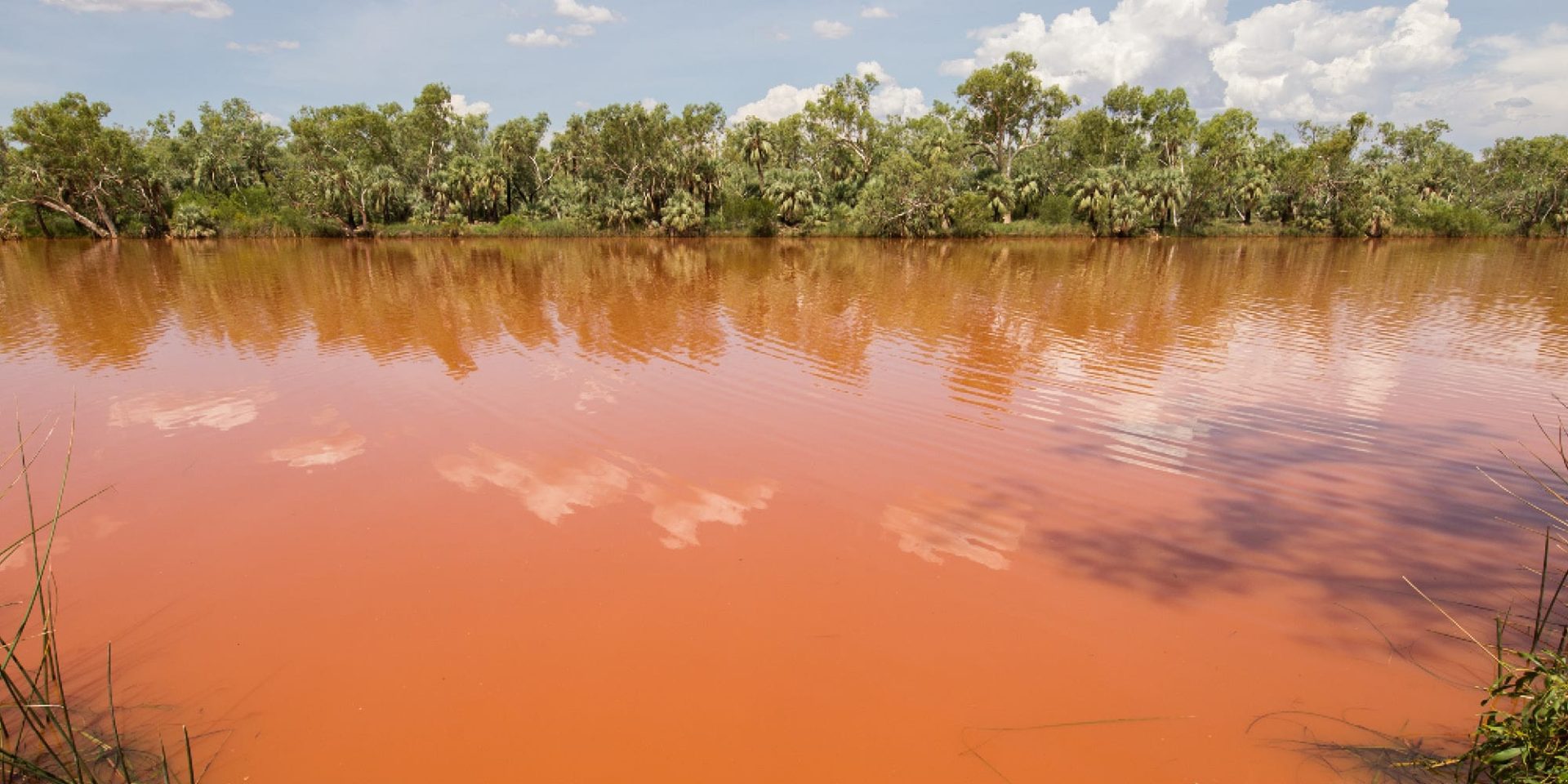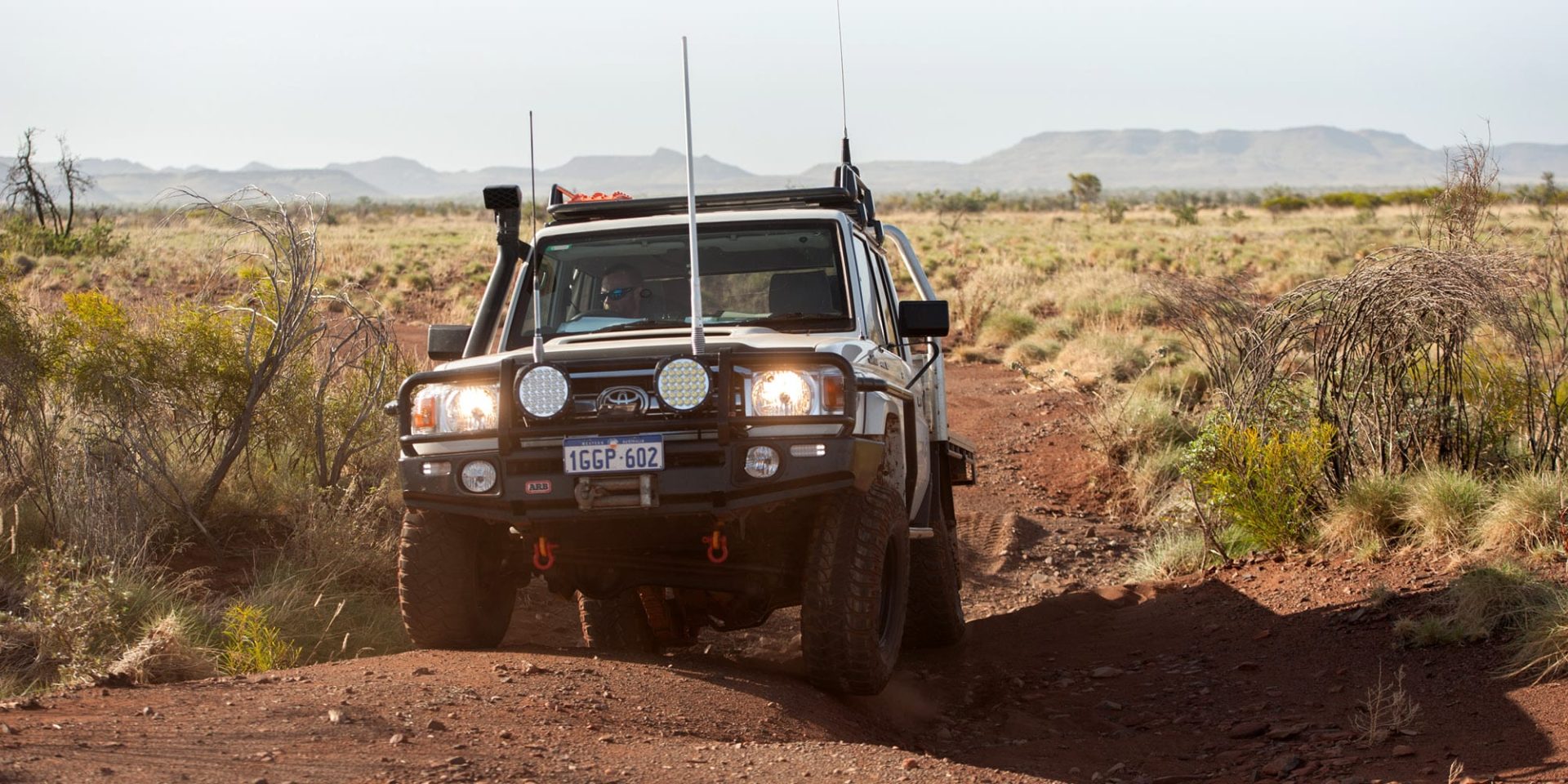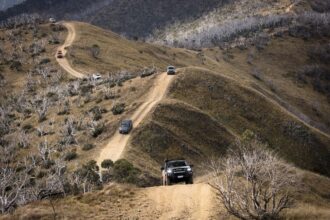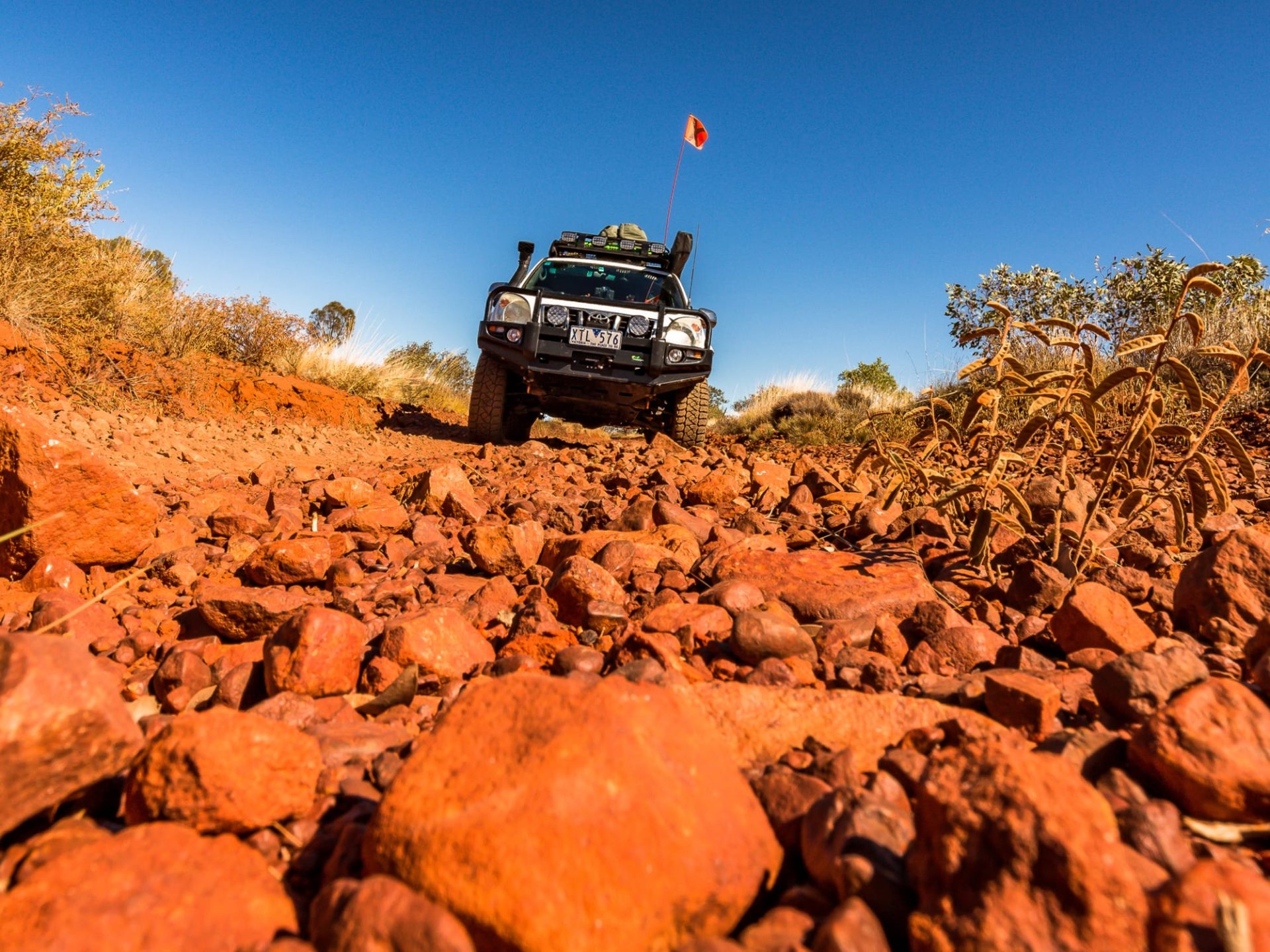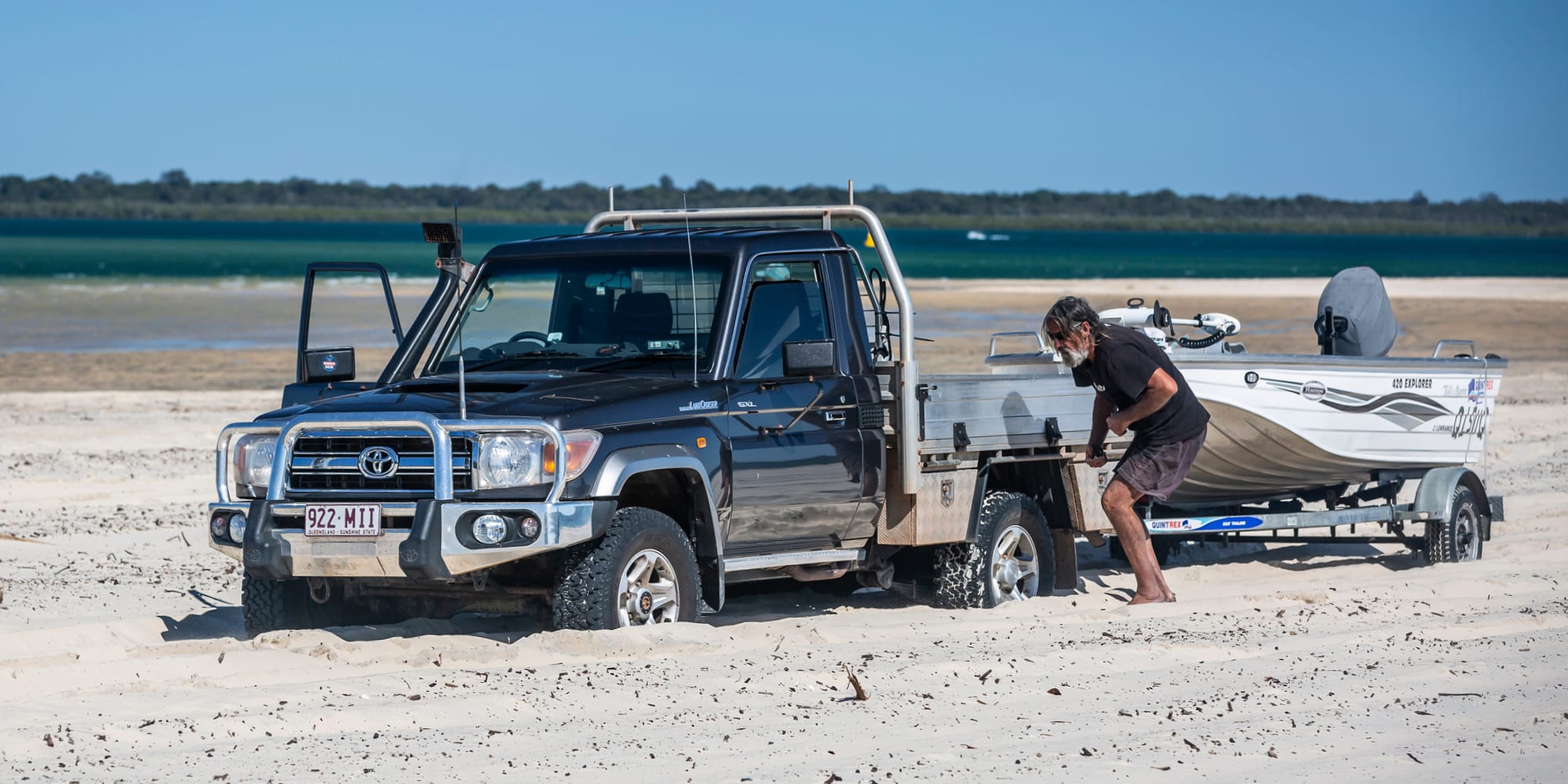Whichever mood you find Millstream in, you’ll be sure of a photo-inspiring remote outback adventure.
In the dry season, the Pilbara’s Millstream-Chichester National Park is a mesmerising mix of open plains, spinifex covered hills, red dirt roads and lofty rocky gorges, but in the wet it transforms into a green-tinged, watery oasis shadowed by billowing storm clouds. Whichever mood you find Millstream in, you’ll be sure of a photo-inspiring remote outback adventure.
Millstream is an hour and a half south of the mining town of Karratha, your best stop for fuel and supplies before setting off into the remote outback areas. I live in Karratha so am lucky to have Millstream as part of my rather extensive backyard and have seen the park in its many guises. It’s somewhere I never get bored of and highly recommend a visit at any time of year whether for a day or for a week. The Millstream Road, delivering you to the outreaches of the park, is now bitumen, making it a fairly speedy journey into this oasis in the desert.
CLICK HERE TO READ THIS TRAVEL ARTICLE IN OUR ONLINE MAGAZINE
It weaves through mesmerising movie-like Pilbara spinifex and red rock scenery alongside the Rio Tinto Tom Price Railway and the water pipelines for the northern towns. The trains are quite a sight snaking through the vast landscape – each train is over 2.4km long, so you’ll need to be patient if you get stopped at one of the many crossings or you can keep yourselves entertained by counting the (approx.) 230 ore carriages without getting dizzy. The trains carry ore from the Tom Price mines to Cape Lambert’s port. Each carriage holds around 100 tonnes, with a fully loaded train weighing nearly 30,000 tonnes.
When the bitumen runs out you’ll find yourself on the gravel Tom Price rail access track, which shadows the trainline all the way down to Tom Price, another grand adventure when you’ve got the time. A permit is required for this track and can be obtained online by watching a video and completing a short quiz. Follow the road for a short while before taking a right turn onto the Millstream-Pannawonica track and you’ll see the sign for the southern section of Millstream-Chichester National Park.
There’s often a car or two around on these roads due to the proximity to the mine sites and northern towns, so be aware on blind corners or if following dusty road trains. The gravel tracks around Millstream are usually accessible by 2WD in the dry season but are 4WD only after rain as the roads can get extremely slippery and washed out. Pilbara rocks are sharp, so be on the alert for punctures! We had two flat tyres on a recent trip to the park and the Fortescue River crossing on the way in was up at door level. Two weeks later there was no water in the crossing at all. That’s the great thing here, no two visits are the same!
The ranger, park registration station and old Millstream homestead are located in the southern part of the park along with campgrounds and swimming holes. A circular loop road takes you past all the main attractions, although in the wet the eastern part of Snappy Gum Drive is often shut due to flooding and track erosion.
Millstream is a sacred land with an ancient Aboriginal history. The Yindjibarndi people inhabited the area well before European settlement, moving between the permanent pools fed from underground aquifers and roaming the rock formations of the nearby Chichester Ranges. Local Yindjibarndi and Ngarluma people are still heavily involved with the management of the park and conduct traditional activities in the significant sites. The area is part of the Aboriginal dreaming legend involving Warlu, a giant sea serpent who emerged from the sea at Coral Bay and meandered his way across the land, forming waterways as he went. He had become angry with two boys who had cooked and eaten Mulga parrots, and followed them up the Fortescue River to Jirndawurrunha Pool in Millstream where he found them and swallowed them whole.
The legend goes that the spirit serpent still lurks in that same rock pool, and the Yindjibarndi people believe you must approach it in the correct, respectful way or you will be harmed. For this reason no swimming is allowed at the pool, but it’s still a great spot to relax in the shady trees.
In more recent history, explorer Francis Thomas Gregory passed through in the mid-1800s, naming the area Millstream after ‘a fine tributary running strong enough to supply a large mill’. He was followed by pastoralists who ran cattle properties until 1967 when the need to preserve the underground aquifer resulted in the National Park being established.
The Homestead Visitor Centre is a fascinating step back in time, with displays of farm machinery and equipment in the original homestead buildings reinforcing that those early settlers were hardy souls to survive the Pilbara wet season heat pre-aircon and fridge.
The plentiful water would have certainly been a life-saver in the early days. There is also a short walking trail near the homestead which will take you out to Jirndawurrunha Pool, such a refreshing lily-covered oasis in this red dirt land. A little further along the main track is Deep Reach Pool, a permanent swimming hole on the Fortescue River that is so deep you won’t be able to see the bottom or the little fish (hopefully not Warlu) that like to nibble your toes. In wet season the pool can become brownish coloured as the water floods through iron-ore country, but once the turbidity settles it’s deep, blue and clear and extremely inviting on a hot day.
The Snappy Gum Drive 20km loop passes by the two designated campsites for this end of the park, Miliyanah and Stargazers, both of which provide vast unending views of the Pilbara night sky. The campsites have toilets and BBQ facilities. There’s also a number of walking trails with heart stopping views of the spinifex dotted hills and flowing waterways.
The drive crosses the Fortescue River, usually flowing at various levels, and passes the Water Corporation’s pipelines, laid in the 1960s to supply water to Karratha. The town now uses water from the nearby Harding Dam but is supplemented by Millstream when water levels are low. Although the drive is fairly easy, make sure to get out of the car, turn the engine off and breath in the silence, the scent of the trees, the vast expanses and, of course, a few flies.
The ford crossing the Fortescue is one of my favourite parts. Take some time to go for a wander to look at the array of colours and jagged shaped rock formations lining the river banks and, of course, the gum trees perched precariously on the cliff edges.
The northern section of Millstream is my personal favourite, offering some spectacular bush camping away from the busier sections of the park. It can be reached by taking a left turn as the bitumen ends on the drive from Karratha or from the Roebourne-Wittenoom Road to the east of Roebourne. After the bitumen ends the gravel winds through more spinifex country past Mount Herbert towards Python Pool. In the wet season, billowing clouds line the southern horizon on this section of the road, offering plentiful opportunities for dramatic photos of lightning storms.
Python Pool is another oasis in the desert, a permanent pool perfect for relaxing swims. There’s toilets and BBQ facilities next to the carpark but no camping is allowed. A short tree lined track pops out at Python Pool’s red rock amphitheatre and the waterfall is often flowing from the cliffs, creating a nice outback shower facility!
This is also the start of the Camel Trail walk, a 16km return track following the original route the cameleers took in the early pastoral days to deliver supplies from the port at Cossack to local stations. It winds through rugged sandstone escarpments of the Chichester Ranges, through rolling spinifex covered hills, large termite mounds and passes McKenzie Spring before heading to the base of Mount Herbert. We walked the track in the early morning, leaving the carpark at 6am armed with snacks and 6L of water each. The first part of the track is steep and a little tiring to get to the top of the ranges but that speccy morning light inspires you to keep going.
McKenzie Spring is another pleasant surprise to the weary walker. A permanent waterhole surrounded by shady trees. I could almost feel the ghosts of cameleers around me here. The cameleers used local stone to lay cobbled paths on the steeper sections as well as small bridges, all of which are still intact, a testament to their skilled workmanship.
Back on the road towards Roebourne is the jewel of Millstream, the George River Gorge track. Yes, as you can probably guess, my favourite camp spot in the Pilbara. The turnoff is an unmarked but fairly well defined gravel track on the right hand side of the road a couple of kilometres from Python Pool, just after a snaking bend. This track is accessible only by 4WD and although not formally marked, is still National Park and therefore all the normal rules still apply. The track weaves and bumps along the escarpments of the Chichester Ranges, over water crossings, through some trickier sections of track, past large gum trees and as the hills become more dramatic brings you into the towering red rock cliffs of George River Gorge. It is not a fast track and took us a good hour to get right into the gorge, perfect for ensuring we had a good look at the scenery as we travelled. Low range is required on a couple of sections. We got a little bogged in a section where cattle had churned the track into a swampy, muddy mess.
Depending on water levels there are numerous areas to camp and swim, all of which are as dramatic as the next. As a local I’ve camped here many times and every time it’s different.
Most recently we only got as far as the first water crossing, only a couple of kilometres from the main road, as the track was too wet to risk going further. This in itself is a great spot to park up and camp and there are a number of rock carvings from ancient Aboriginal times on the cliff face, not always immediately obvious but if you take the time to look you’ll find them. Right in the gorge though its mainly waterfront views facing the lofty cliffs – pick your spot!
At dawn and dusk the silence is punctuated by the myriad of native birds thriving in the water ways and you’re likely to see Euro kangaroos, goannas and if you’re lucky, a python or two. Millstream has over 120 species of birds, 30 mammals, 150 reptiles and 500 species of plants. In spring (June – August) wildflower displays are incredible, with red Sturt’s desert peas and purple Mulla Mulla dominating the landscape.
A night tucked away surrounded by the cliffs of George Gorge is as good as it gets. This is the authentic Pilbara – spinifex, waterholes, red rocks, tricky 4WD tracks and a myriad of flora and fauna. It’s still a relatively unknown location and at times you’ll feel like an explorer out in these parts. And by the way, when you get back to the main road, have a look for an unmarked track on the left, where you’ll find another hidden little gorge and some Aboriginal rock art fairly close to the road.
In my biased view, Millstream Chichester has it all for the traveller wanting to experience the real Pilbara. From ore trains and road trains to waterholes, Aboriginal art and all sorts of wildlife as well as an amazing array of colours and light, it’s a photographer’s dream, a birdwatcher’s dream and an adventurer’s dream.



